There’s no denying it—volcanoes are pretty awesome. But what’s even cooler than the inspiration for Mount Doom? Space volcanoes. And they’re way more explosive, awe-inspiring, and destructive than anything you’ll find on Earth.
1. Olympus Mons Mars
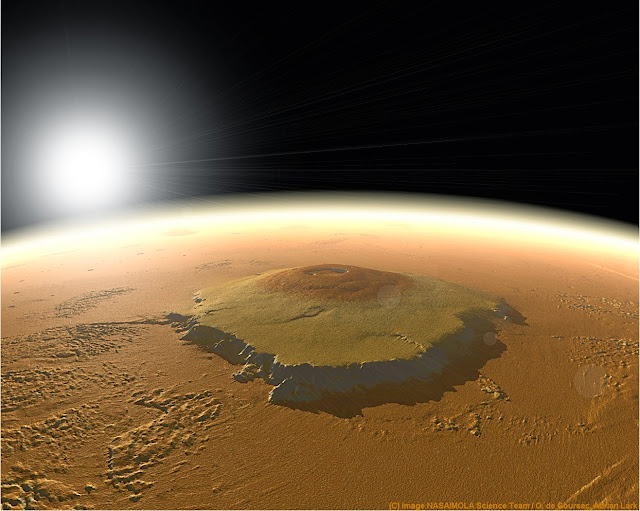
Found in the Tharsis Montes region near the Martian equator, Olympus Mons is one of a dozen large volcanoes, many of which are ten to a hundred times taller than their terrestrial counterparts.
The tallest of them all towers 16 miles (25 kilometers) above the surrounding plains and stretches across 374 miles (624 km) — roughly the size of the state of Arizona. Olympus Mons rises three times higher than Earth's highest mountain, Mount Everest, whose peak is 5.5 miles above sea level.

2. Pancake Domes Venus

This image shows three of the venusian pancake domes. They lie near the equator on the edge of Eistla Regio. The two larger domes are roughly 65 km (40 miles) wide, and the smaller dome is about 22 km (13 miles) wide. All three are very low, rising less than 1 km above the surrounding plains. The tops are fairly flat to slightly bowl-shaped, and they show clear patterns of small cracks and faults.
Most of these cracks probably formed with the dome, but some may have formed later with the faults in the surrounding plains. Note how some features extend from plains onto the edges of the central and right hand domes (arrows).
3. Tiger Stripes Enceladus (Moon Of Saturn)

The way the tiger stripes are oriented on the moon's surface when Enceladus is farthest from Saturn pull most of them open, and when Enceladus is closest to Saturn, the stresses force most of them to close, which exposes water vapor to the vacuum of space.
Enceladus' exaggerated elliptical orbit causes the moon's icy crust to flex at these fault lines. As huge pieces of crust rub together, they generate enough heat to evaporate the ice lurking within the faults, in the same way that comets sprout tails when they veer too close to the sun's heat. In addition, Enceladus might have a vast, underground ocean that allows Enceladus to be more easily stretched by tidal forces so that it would produce enough heat to sprout geysers.
4. Pillan Patera Io (Moon Of Jupiter)

A new dark spot, 400 kilometers (249 miles) in diameter, which is roughly the size of Arizona, surrounds Pillan Patera. Pele, which produced the larger plume deposit southwest of Pillan, also appears different than it did during the seventh orbit, perhaps due to interaction between the two large plumes. Pillan's plume deposits appear dark at all wavelengths. This color differs from the very red color associated with Pele, but is similar to the deposits of Babbar Patera, the dark feature southwest of Pele.

5. Cryovolcanoes Triton (Moon Of Neptune)

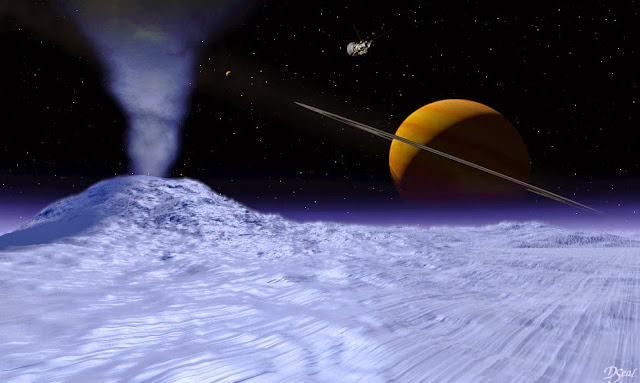
Unlike the hot molten lava that we are familiar with here on Earth, the volcanoes of Triton give forth to eruptions of extremely frigid gas and ice spewing from Triton's frozen core. A cryovolcano is an icy volcano that emit plumes of very cold methane, ammonia and/or water. This volcanic activity is a result of melted ices that are caused by tidal friction or another source of heat.
6. Tupan Patera Io

The island in the middle of Tupan Patera has a wonderful red margin surrounding it, most probably caused by sulfur deposits. This indicates that Tupan Patera is very active and could well be leading up to a big explosion any day now.
7. Tharsis Montes Mars
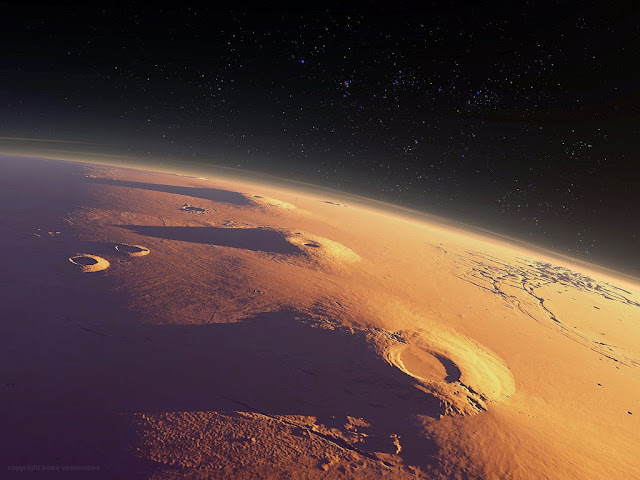
While not the largest of the Tharsis volcanoes, Arsia Mons has the largest caldera on Mars, having a diameter of120 km (75 mi)! The main difference between the volcanoes on Mars and Earth is their size; volcanoes in the Tharsis region are up to 100 times larger than those anywhere on Earth.
In a very similar mechanism to one found on the Hawaiian islands, studies have shown that the members Tharsis Montes region have actually lined themselves up over the planet’s history. Further studies also indicate that the region may be lying dormant for now and could erupt again sometime in the future.
8. Culann Patera Io

Whereas explosion-dominated eruptions are over in a matter of hours or days, flow-dominated eruptions last years—even decades—with a steady outpouring of lava which travels thousands of miles across the surface. Because of this, there are lava plains on Io that are bigger than the largest African countries.
9. ‘An Unusual Volcano’ Venus
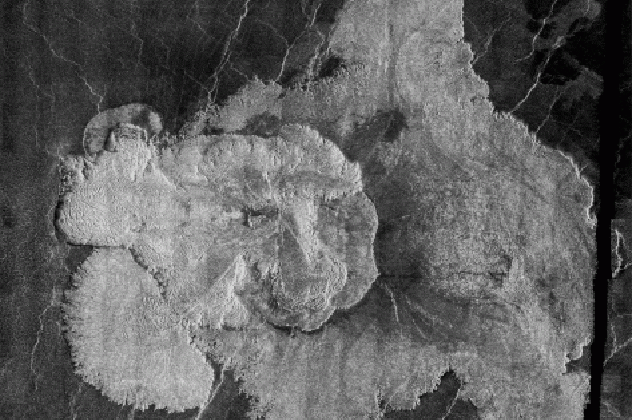
We already have a vague idea about what happened to the water on Venus. Since Venus lacks an ozone layer, ultraviolet light from the Sun was able to penetrate its upper atmosphere, where it broke down water into its individual components—hydrogen and oxygen. Solar wind then stripped away the lighter hydrogen molecules. Somewhere along the line, the planet’s surface heated up and sent most of its water into the air, where it fell victim to this solar stripping.
10. Tvashtar Paterae Io
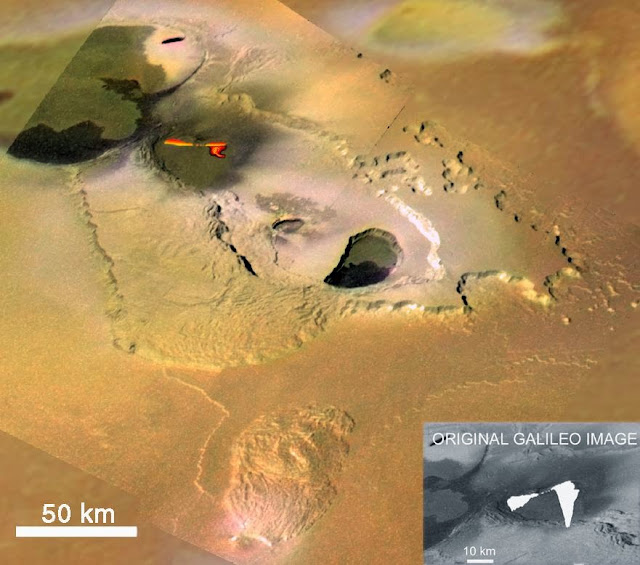
During this time, a 25 kilometres (16 mi) long (the size of Manhattan), 1 to 2 kilometres (0.62 to 1.2 mi) high curtain of lava was seen to erupt from one crater, a lake of superheated silicate lava erupted in the largest crater, and finally a plume of gas burst out, rising 385 kilometres (239 mi) above the moon and blanketing areas as far away as 700 kilometres (430 mi).
Therefore scientists expected that the lava flow margins or patera boundaries within Tvashtar would have changed drastically. However, the series of observations revealed little modification of this sort suggesting that the intense eruptions at Tvashtar are topographically confined.

 Top 10 Most Beautiful Islands In Asia
Top 10 Most Beautiful Islands In Asia
 Top 10 Deadliest rocks and minerals on earth
Top 10 Deadliest rocks and minerals on earth


 Top 10 Weirdest Lizards - Reptiles On The Planet
Top 10 Weirdest Lizards - Reptiles On The Planet
 Gallery: The Best Beautiful Photos Of Old Sai Gon, Vietnam
Gallery: The Best Beautiful Photos Of Old Sai Gon, Vietnam
 Top 10 Species Of Exotic Mushrooms In The World
Top 10 Species Of Exotic Mushrooms In The World
 Top 10 Most Amazing Sea Monsters on the Earth
Top 10 Most Amazing Sea Monsters on the Earth
 Top 10 Weirdest Jobs In The World
Top 10 Weirdest Jobs In The World

0 Comment | Write Something